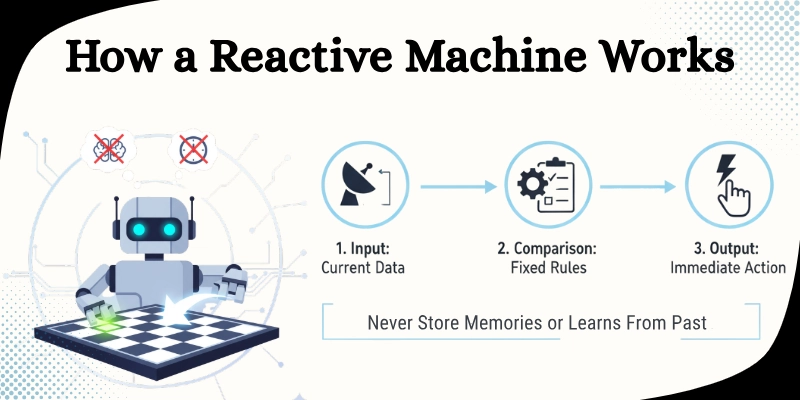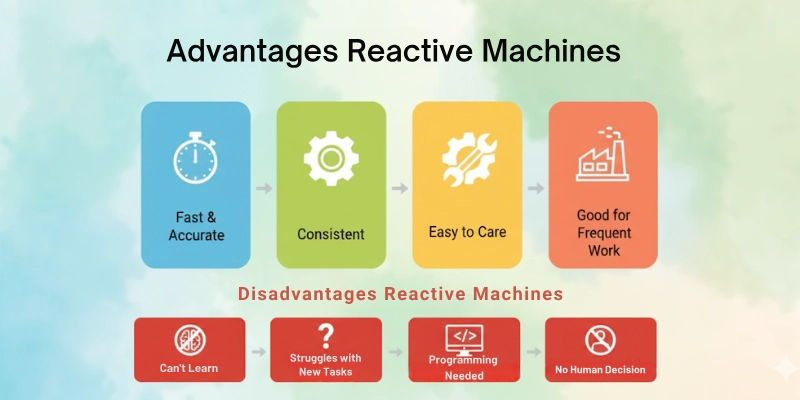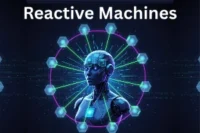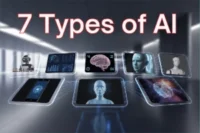Reactive Machines: The Foundation of AI Decision Making
Published: 29 Sep 2025
Did you know that Reactive Machines are the oldest and simplest type of artificial intelligence? Can a computer truly be considered intelligent if it cannot retain its past experiences? These machines show that it can. They only look at what is happening right now and do not save any memories, yet they can still play complex games and handle simple tasks quickly.
If you want AI that is fast and does not need complicated settings, Reactive Machines are built for that.
Picture a calculator that never remembers yesterday’s sums but always gives the right answer. This is how Reactive Machines work in games, basic chatbots, and even smart home devices.
Reactive Machines: The Base of AI Decision Making Understanding Simple Response-Based AI
Reactive machines are the most basic kind of artificial intelligence. They look at what is happening right now and take action based on set rules.
- They cannot remember anything from the past or learn from old experiences.
- They work like a reflex, quickly taking in information and giving an instant answer.
Example
IBM’s Deep Blue, the chess computer that beat world champion Garry Kasparov in 1997, could check millions of chess moves in real time. But it never remembered past games or created its own playing style.
Key Features
Reactive Machines have simple but important features that make them fast and reliable for basic tasks.
- Work by spotting patterns in the moment
- Decide and act only on the information they have right now.
- Give the same response whenever faced with the same situation.
How a Reactive Machine Works
Reactive machines follow a clear step-by-step process:

- Sensors or input tools collect what is happening right now.
- The machine compares this information with its fixed rules.
- It gives a quick action or reply based only on the current data.
- It never stores memories or learns from what happened before.
Real-life Examples for Reactive Machine
These are some simple ways Reactive Machines are already used today:
- IBM’s Deep Blue: A chess computer that calculates the best move during a game without remembering past matches.
- Basic voice assistants: Simple helpers that answer direct questions but cannot recall previous chats.
- Traffic signal systems: Lights that change based on cars or sensors without keeping any record.
- Factory robots: Machines that pick up or pack items following set instructions without learning.
Real-life Applications for Reactive Machine
Reactive Machines are used in many areas to handle tasks quickly and accurately.
Gaming
Reactive AI makes games more interactive by responding to players in real time.
- NPCs (non-player characters) attack when they spot the player.
- Guards follow fixed patrol routes without learning.
- Enemies react to sudden player actions like shooting or hiding.
Industrial Automation
Factories use reactive AI to keep production smooth and efficient.
- Robots sort products by size, color, or defects instantly.
- Machines scan each item and respond on the spot.
- No memory is stored, so every product is checked as new.
Medical Diagnosis
Reactive systems help doctors spot problems quickly in medical tests.
- AI scans X-rays or blood tests to detect tumors or diseases.
- It matches current data with known patterns for quick feedback.
- No past patient history is needed for instant results.
Email Spam Filters
Reactive AI keeps inboxes clean by catching unwanted emails.
- It checks incoming messages for spam-like patterns.
- Emails are marked as safe or spam right away.
- No record of previous emails is required to make decisions.
Impact on society and industries
Reactive machines change our way of working and living in simple ways.
- Remove repeated tasks quickly: machines can handle regular jobs better than humans.
- Reduce the cost of easy work: companies save money when machines perform basic functions.
- Increase safety: rapid reactions in factories or traffic systems help to avoid accidents.
- Free people for other work: people can focus on creative or difficult tasks while machines make it easier. Impact on society and industries
Advantages and Limitations
Reactive Machines have strong points, but also some limits to know.

Advantages
These are the main benefits of using Reactive Machines.
| Benefits of Reactive Machines |
|---|
|
Disadvantages
The most important things here cannot be done by reactive machines.
| Drawbacks of Reactive Machines |
|---|
|
Conclusion
So, in this article, we’ve covered Reactive Machines in detail. These AI systems form the foundation of artificial intelligence, handling simple tasks quickly without memory or learning. I recommend understanding these basics first, as it makes learning advanced AI types much easier. Keep exploring other AI types to see how technology is evolving and how it can help in our daily lives.
FAQs
After learning about Reactive Machines, you might have some questions. Here are the most common questions and easy answers to help you understand how they work and where they are used.
Reactive machines are the simplest type of AI. They only look at the current situation and respond immediately. They do not remember past actions or learn from experience.
They use sensors or inputs to see what is happening. Then they follow pre-programmed rules to react instantly. They cannot think ahead or learn from mistakes.
No, they cannot learn or remember anything. They only react to what is happening now. Humans must program them for new tasks or situations.
They are used in chess computers, basic voice assistants, and simple robots. They can control traffic lights or move items in factories. Their main job is to do simple tasks quickly.
They work very fast and make few mistakes. They are good for repeated or boring tasks. They are simple to maintain and always consistent.
They cannot solve complex problems or think creatively. They cannot learn from experience or remember past actions. They need constant programming for new tasks.
They only follow the rules they are given. If the rules are wrong or the input is unclear, they may give the wrong output. They cannot fix mistakes by themselves.
Start with small projects like a simple chess program or a basic voice assistant. Learn to understand inputs and outputs first. Try simple rules and see how the machine reacts.
Yes, they can handle simple tasks like checking quiz answers or moving items. They help save time for humans. But they cannot replace teachers or managers.
Avoid giving them unclear instructions because they cannot think for themselves. Make sure they are properly maintained and programmed. Don’t rely on them for complex decisions or creative tasks.

- Be Respectful
- Stay Relevant
- Stay Positive
- True Feedback
- Encourage Discussion
- Avoid Spamming
- No Fake News
- Don't Copy-Paste
- No Personal Attacks

- Be Respectful
- Stay Relevant
- Stay Positive
- True Feedback
- Encourage Discussion
- Avoid Spamming
- No Fake News
- Don't Copy-Paste
- No Personal Attacks





